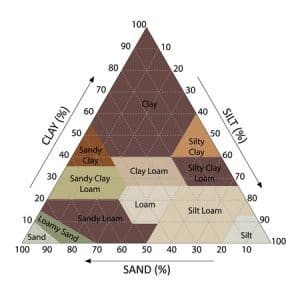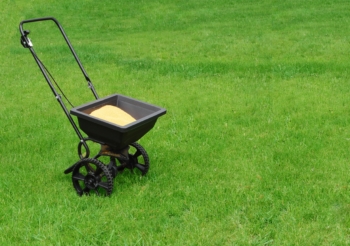If you’ve ever tried gardening or lawn care in North Texas, you’ve probably had a love-hate relationship with two things: our stubborn clay soil and spring’s “hold my sweet tea” weather swings. One day it’s 75°F and sunny, the next it’s a monsoon followed by a surprise frost. And let’s not even talk about that concrete-like clay that turns into sticky sludge when wet and cracks like a desert when dry.
But here’s the good news: with the right spring lawn fertilizer strategy, you can turn that challenging clay into a thriving garden or lush lawn—even when spring can’t make up its mind. In this guide, we’ll break down how to choose fertilizers that work with North Texas soil and weather, not against them. Let’s dig in!
Why Clay Soil and Spring Weather Are a Dynamic Duo
North Texas clay soil is like that high-maintenance friend who needs constant attention. It’s dense, slow-draining, and prone to compaction, which means water and nutrients struggle to reach plant roots. Add spring’s rollercoaster weather—downpours one week, drought the next—and you’ve got a recipe for stressed plants and patchy grass.
The Clay Conundrum:
- Poor Drainage: Clay holds water like a sponge, drowning roots during heavy rains.
- Nutrient Lockout: Tight soil particles bind to nutrients, making them unavailable to plants.
- Compaction: Walking or mowing on wet clay squishes air pockets, suffocating roots.
Spring’s Mood Swings:
- Erratic Rainfall: Too much water leaches nutrients; too little stresses plants.
- Temperature Fluctuations: Warm days trick plants into growing, only to shock them with a late frost.
- Weed Explosions: Spring rains + compacted soil = weeds throwing a block party in your yard.
The key to success? Choosing fertilizers that address these challenges head-on.

Fertilizer Basics: What N-P-K Really Means for Your Soil
Every fertilizer bag has three numbers (like 10-10-10 or 24-4-12). These represent the ratio of N (nitrogen), P (phosphorus), and K (potassium). Here’s how they play in North Texas:
- Nitrogen (N): Promotes leafy growth and green color. But be careful—too much N in spring can lead to weak, leggy plants that can’t handle a late freeze.
- Phosphorus (P): Supports root development and flowering. Clay often lacks available phosphorus due to its alkaline pH (hello, North Texas limestone!).
- Potassium (K): Boosts stress tolerance and disease resistance. Critical for helping plants survive spring’s wild weather.
Ideal Ratios for North Texas’ Clay Soil:
- Lawns: Look for a 3:1:2 ratio (e.g., 15-5-10) to balance growth with stress resilience.
- Gardens: Opt for balanced blends (10-10-10) with slow-release nitrogen to avoid overfeeding.
- Flowers & Shrubs: Higher phosphorus (e.g., 5-10-5) encourages blooms in our alkaline soil.
Go to our lawn fertilization service page for details.

The Best Spring Lawn Fertilizers for Clay Soil
Not all fertilizers are created equal—especially in clay. Here’s what works best:
1. Slow-Release Granular Fertilizers
- Why They Shine: They break down gradually, providing steady nutrients without overwhelming clay’s limited drainage.
- Top Picks:
- Scotts Turf Builder Southern Triple Action (for lawns): Fights weeds while feeding.
- Espoma Garden-Tone (for veggies): Organic blend with probiotics to improve soil structure.
2. Liquid Fertilizers (With a Caveat)
- Pros: Quick nutrient boost for stressed plants.
- Cons: Can leach away in heavy rains. Use them sparingly in spring and pair with organic matter.
- Try: Miracle-Gro LiquaFeed for container plants or spot treatments.
3. Organic Options
- Compost: The MVP for clay soil! Mix in compost to loosen texture and add microbes.
- Worm Castings: Improve drainage and provide gentle nutrients.
- Fish Emulsion: Fast-acting organic nitrogen source (but brace yourself for the smell).
Pro Tip: Always pair fertilizers with gypsum (calcium sulfate). It breaks up clay clumps without altering pH, letting roots breathe and absorb nutrients better.
When to Fertilize in Spring: Timing Is Everything

North Texas springs are unpredictable, but here’s a foolproof schedule:
- Early March: Apply pre-emergent spring lawn fertilizers (like Scotts Halts Crabgrass Preventer) to stop weeds before they start.
- Mid-April (After Last Frost): Feed lawns and gardens with slow-release granular fertilizer. Wait until soil temps hit 55°F—check with a soil thermometer!
- Late May: Side-dress veggies and flowers with compost or a light liquid feed to prep for summer.
Avoid These Mistakes:
- Fertilizing too early (before mid-March), which can spur frost-damaged growth.
- Overusing high-nitrogen fertilizers, which worsen clay compaction.
- Ignoring soil tests! The Texas A&M AgriLife Extension offers $10 soil tests to tailor your approach.
How to Apply Fertilizer in Clay Soil
Even the best fertilizer won’t help if it’s applied wrong. Follow these steps:
- Aerate First: Rent a core aerator or hire a pro to punch holes in your lawn. This helps fertilizer reach roots instead of sitting on compacted clay.
- Water Lightly Before Applying: Moist (not soggy) soil helps granules dissolve.
- Use a Broadcast Spreader: Ensures even coverage. Walk slowly—clay deserves patience!
- Water Deeply After: Soak the area to wash nutrients into the soil, but don’t flood it.
Spring Weather Hacks: Protecting Your Fertilizer Investment
- Rain in the Forecast? Skip liquid feeds and opt for slow-release granules.
- Heatwave Coming? Boost potassium (the 3rd number) to help plants handle stress.
- Unexpected Frost? Cover tender plants with frost cloth and hold off fertilizing until temps stabilize.
Organic vs. Synthetic: Which Is Better for Clay?
Both have pros and cons:
| Organic Fertilizers | Synthetic Fertilizers |
|---|---|
| Improve soil structure over time | Give quick, precise nutrient boosts |
| Less risk of runoff/overfeeding | Can worsen salt buildup in clay |
| Work slower but last longer | Require more frequent applications |
Verdict: Use a mix! Start with organic amendments (compost, worm castings) to build soil health. Then supplement with synthetic blends during peak growing periods.
Local Heroes: Fertilizer Blends Made for North Texas
Support local businesses with products tailored to our region:
- Liquid Soil Loosener by The Natural Gardener (Austin-based): Breaks up clay and adds nutrients.
- Texas Tea All-Purpose Fertilizer: A fish/kelp blend loved by DFW gardeners.
- Lady Bug Naturals 8-2-4: Designed for Texas soils and native plants.
Final Thoughts: Work Smarter, Not Harder
Clay soil doesn’t have to be the enemy. By choosing the right spring lawn fertilizers and timing, you can turn its moisture-retaining superpower into an asset. Remember:
- Test your soil.
- Prioritize slow-release and organic options.
- Aerate annually.
And when spring weather throws a curveball? Adapt, don’t panic. A little knowledge goes a long way in creating a yard or garden that thrives, no matter what North Texas spring serves up.
Keeping up with a consistent lawn care routine will keep your lawn happy and healthy. Check out our lawn mowing service page.
FAQ
Q: Can I use regular garden soil in clay?
A: Mix in compost or sand to improve drainage—never add straight sand, though, or you’ll make concrete!
Q: How often should I fertilize my lawn in spring?
A: Once in early spring (post-frost) and once in late spring. Over-fertilizing harms clay soil.
Q: Are liquid spring lawn fertilizers bad for clay?
A: Not if used sparingly! Pair it with organic matter to prevent nutrient loss.
Q: Why does my soil turn green after fertilizing?
A: Algae growth from excess moisture and nitrogen. Cut back on watering and switch to slow-release feeds.
Q: Can I fertilize after heavy rain?
A: Wait 2–3 days for soil to dry slightly to avoid runoff.
